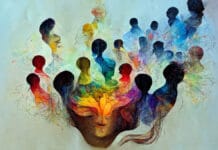The arrival of new knowledge in Kerala was deeply connected to the movement of translation, which acted as a major agent of cultural and intellectual modernisation. Translation in Malayalam was not simply the conversion of words from one language to another; it was a creative and transformative process that reshaped the cultural and intellectual life of the region. Translators were not mere facilitators of foreign ideas; they were creative partners who reinterpreted and adapted knowledge to suit the Malayalam-speaking world. In this sense, translation became a process of trans-creation—a reimagining of knowledge that introduced new fields of science, philosophy, literature, and art to Kerala.
- Translation in Kerala became more than a linguistic act; it was a creative and cultural revolution.
- Translators were not mere intermediaries but co-creators who reimagined texts and adapted new ideas to Malayalam culture.
- It introduced new fields of knowledge, including science, philosophy, and art, and established a modern way of thinking.
- The process can be termed “trans-creation”, as it involves reshaping meaning and form to suit new contexts.
Cultural Significance of Translation
Translation, in its simplest definition, is the rendering of meaning from one language into another without losing the essence, tone, or emotional force of the original. Yet, when considered culturally, translation becomes much more than a linguistic exercise. It involves the exchange, assimilation, and reinterpretation of ideas, values, and worldviews across languages and civilisations. It breaks down barriers of region, religion, and identity, allowing a society to enter into dialogue with the global community. Translation thus becomes a powerful means of learning, adaptation, and transformation.
- Translation is generally defined as converting meaning from one language to another without losing tone or message.
- However, it also acts as a cultural bridge, enabling the exchange of ideas, values, and worldviews between communities.
- It breaks linguistic and regional barriers, connecting Kerala to global literature and ideas.
- Through translation, people share human emotions and experiences, transcending caste, religion, and regional differences.
Translation as a Process of Cultural Transformation
As a cultural process, translation facilitates the merging of diverse traditions and intellectual currents. It allows a society to absorb new ideas while reshaping them according to its own social realities. This dynamic process often marks the transition from traditional to modern ways of thinking. The traditional worldview, rooted in faith, hierarchy, and custom, gradually gives way to a modern one shaped by science, rationality, and humanism. Through the act of translation, the collective consciousness of a community begins to evolve, enabling people to share experiences and emotions beyond rigid boundaries. In Kerala, the translations from European languages into Malayalam became the medium through which a new worldview entered the cultural fabric of the people, replacing feudal structures with modern, capitalist values.
- Translation helps merge different intellectual traditions and creates new cultural forms.
- It marks the transition from traditional to modern thought, where feudal values give way to rational, scientific, and humanist ones.
- By internalising modern ideas, Kerala’s society moved from a feudal order to a capitalist modernity.
- Translation made it possible for people to reorient their worldview and adopt new social and intellectual identities.
Ancient Origins of Translation
The practice of translation itself has ancient origins. From the Epic of Gilgamesh, translated in Sumerian times to the Rosetta Stone of 196 BCE, translation has always been an instrument of communication, trade, diplomacy, and the spread of knowledge. It played a central role in connecting civilisations, helping human societies to share wisdom and develop mutual understanding across linguistic and cultural divides.
- Translation has existed since ancient civilisations.
- Early examples include:
- The Sumerian Epic of Gilgamesh translations.
- The Rosetta Stone (c. 196 BCE)—a trilingual inscription used to decode Egyptian hieroglyphs.
- It served as a tool of trade, diplomacy, religion, and cultural exchange, connecting civilisations across time.
Defining Modernity
To understand the transformation that translation brought to Kerala, it is essential to define what is meant by modernity. The term ‘modern’ refers to a profound shift in how people perceive the world and their place within it. This shift, which began in seventeenth- and eighteenth-century Europe, was fuelled by the emergence of modern science. Isaac Newton’s Philosophiae Naturalis Principia Mathematica (The Mathematical Principles of Natural Philosophy) revolutionised thought by introducing a rational, evidence-based way of understanding the natural world. Newton’s theories laid the foundations for the Age of Enlightenment, also known as the Age of Reason, during which scientific inquiry replaced dogma and faith as the primary means of learning. The spread of this scientific worldview across the world became the hallmark of modernisation.
- The word modern implies a radical shift in worldview and knowledge systems.
- The rise of science in seventeenth- and eighteenth-century Europe marked this transition.
- Isaac Newton’s Principia Mathematica (originally The Mathematical Principles of Natural Philosophy) redefined how the world was understood.
- His theories inspired the Age of Enlightenment (1685–1815), also called the Age of Scientific Reason.
- Modernity thus represents rational inquiry, evidence-based knowledge, and freedom from superstition.
Modernisation through Translation in India
In India, translation of secular and scientific works from European languages served as a major vehicle of this transformation. During the late eighteenth century, English works were widely translated into Bengali, as Calcutta, the capital of British India, had become a centre of education and reform. Kerala, too, witnessed similar developments. Many Malayalis working in Calcutta were exposed to European literature, philosophy, and science, and they brought these ideas back home. The translation of English and European works—poems, stories, novels, and later philosophical and historical texts—began to appear in Malayalam from the late nineteenth century onwards. This process expanded Malayalam’s vocabulary, refined its prose style, and introduced realism into fiction.
- Translation of secular and scientific works from European languages introduced Indians to modern ideas.
- In the late 18th and 19th centuries, English works were widely translated into Bengali, as Calcutta was then the capital of British India.
- Kerala, too, was intellectually active during this period; many Malayalis employed in Calcutta brought back European ideas and literature.
- These people helped translate English and European works into Malayalam, spreading Western thought in Kerala.
Literary Effects in Malayalam
The impact of Russian and European literature was particularly significant. The works of Tolstoy, Dostoevsky, Chekhov, Gorky, and Sholokhov, translated through English or Bengali intermediaries, enriched Malayalam literature both in form and content. These translations did more than reproduce foreign stories; they stimulated a new mode of thinking that combined emotional depth with social realism. They helped to modernise the Malayalam literary imagination, making it more analytical, empathetic, and socially conscious.
- From the 1890s onwards, Malayalam saw the translation of poems, short stories, and novels from English and other European languages.
- Later, texts from history, science, and philosophy were also translated.
- This movement:
- Modernised Malayalam prose, introducing a refined and standardised form.
- Brought realism into fiction and drama.
- Inspired a new generation of writers and readers familiar with global thought.
- Russian novelists like Tolstoy, Dostoevsky, Chekhov, Gorky, and Sholokhov profoundly influenced Malayalam writers, enriching its themes and techniques.
Translation and the Formation of a Malayali Identity
Through this process, translation also contributed to the shaping of a new Malayali identity. It infused global ideas with regional emotions, allowing Keralites to see themselves as part of a larger human story. The act of translation made it possible to reinterpret universal human experiences through local sensibilities. In a metaphorical sense, every human being is a translator, continually interpreting thoughts, feelings, and experiences in the course of daily life. Translation, therefore, is not a secondary or auxiliary act but a fundamental human activity that underlies communication, understanding, and coexistence.
- Humans, in a metaphorical sense, are translators by nature, constantly interpreting thoughts and emotions.
- Translation is thus central to human communication and understanding.
- The translation movement in the nineteenth century helped shape a distinct Malayali identity by blending global ideas with local sensibilities.
- It produced a modern Keralite culture distinct from traditional forms of thought and art.
Translation Before and After Printing
Even in the age of advanced science and technology, translation continues to be indispensable in every field—media, education, diplomacy, and cultural exchange. It remains central to the creation of literary cultures in both Indian and world languages. In Kerala, translation played an extraordinary role in the evolution of Malayalam as a modern literary language. Long before printing was introduced, Sanskrit classics were translated into Malayalam and preserved on palm-leaf manuscripts. These early translations laid the foundation for a bilingual intellectual culture that connected Kerala to India’s broader literary heritage. With the advent of print, translations of major Indian and European texts flourished, contributing to the modernisation of Malayalam prose and the development of its distinctive literary identity.
- Long before printing, Sanskrit works were translated into Malayalam and preserved as palm-leaf manuscripts.
- With the advent of print culture, these texts were published and widely circulated, strengthening literary exchange.
- Translation became integral to the evolution of Malayalam as a modern literary language.
Lasting Impact
The coming of new knowledge to Kerala through translation marked a decisive turning point in the region’s cultural and intellectual history. Translation was not merely a linguistic exercise but a creative process that brought modernity to Malayalam society. It introduced new forms of knowledge, expanded intellectual horizons, and transformed the language into a powerful tool of self-expression and critical thought. By opening the gates of cross-cultural exchange, translation helped to shape not only modern Malayalam literature but also the very consciousness of what it means to be a Malayali in the modern world.
- Translation played a decisive role in Kerala’s cultural modernisation.
- It introduced scientific rationalism, realism, and global humanism into Malayalam thought.
- It transformed Malayalam literature from a classical to a modern language.
- By connecting Kerala to the broader world of ideas, translation shaped the modern Malayali identity and expanded the boundaries of knowledge and imagination.




























